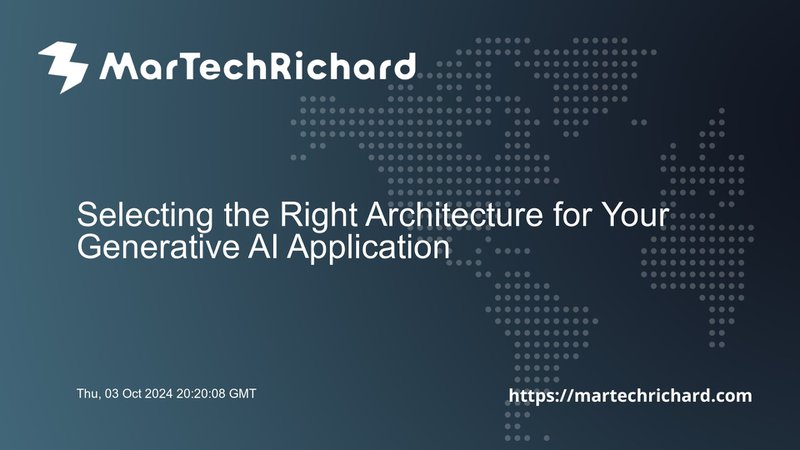
How to Choose the Architecture for Your GenAI Application
In the rapidly evolving landscape of generative AI (GenAI), selecting the right architecture is crucial for balancing creativity, risk, cost, and latency. This article provides a framework to help you choose the simplest, fastest, and cheapest architecture that meets your GenAI application's needs.
Key Points from the Article
- Identify Creativity and Risk:The first step in choosing an architecture is to identify the level of creativity required by your GenAI application and the amount of risk associated with it. This helps narrow down the choice to an architecture that strikes the right balance between these two factors.
- Architectural Patterns:The article outlines eight architectural patterns for GenAI applications, each positioned on a risk-creativity axis. These patterns include generating each time (for high creativity, low risk tasks), using off-the-shelf guardrails, and employing agentic systems for complex tasks.
- Balancing Complexity and Fit-for-Purpose:The goal is to find a balance between complexity, fit-for-purpose, risk, cost, and latency. Over-engineering your application by fine-tuning the LLM excessively can be counterproductive. Instead, use a framework that guides you in selecting an architecture that meets your specific use case needs.
- Integration with Data Governance:Effective data governance is essential for ensuring that sensitive data is protected and accessible. This includes capabilities like data masking, access control, and automated user provisioning.
Additional Insights
- Data Maturity:Generative AI heavily relies on a solid foundation of data maturity. This includes having a central, cloud-based data repository as a single source of truth and tools that can reliably ingest data at scale with fast updates and reliability.
- Prompt Engineering:Customizing prompts is crucial for eliciting better responses from LLMs. Tools like those provided by Databricks make prompt engineering easy by offering models in the marketplace and serving models behind an endpoint.
- Neural Architecture Search (NAS):NAS can alleviate the burden of researchers designing and discovering the best architectures by using AI to search through model architectures. Techniques like AGNN apply NAS for learning GNNs to improve performance on graph-based datasets.
Discussion Questions or Prompts
- What are the key considerations when choosing an architecture for a GenAI application?This question encourages discussion on the importance of balancing creativity and risk, as well as the need for data governance and integration.
- How does prompt engineering impact the performance of LLMs in GenAI applications?This prompt invites insights into the role of prompt customization in enhancing LLM responses and the tools available for this purpose.
- What role does Neural Architecture Search play in optimizing model architectures for GenAI?This question sparks discussion on how AI can assist in designing more effective model architectures and the benefits of using NAS techniques.
Lead Generation
To further explore these topics and gain more insights into how to choose the right architecture for your GenAI application, you can:
- Contact us via WhatsApp: https://go.martechrichard.com/whatsapp
- Reach out via LinkedIn message: Subscribe to our LinkedIn page and newsletters via https://www.linkedin.com/company/martechrichard
Source: Towards Data Science – How to Choose the Architecture for Your GenAI Application
